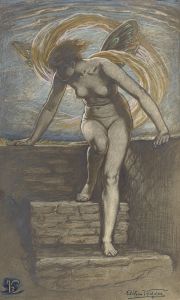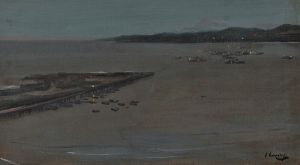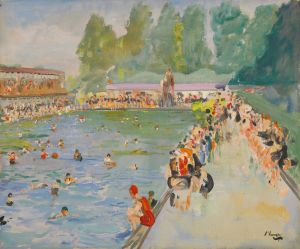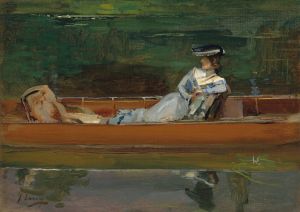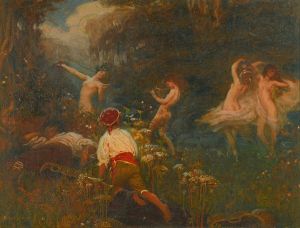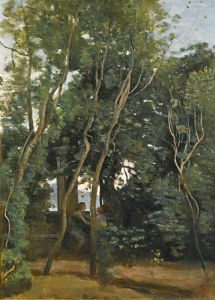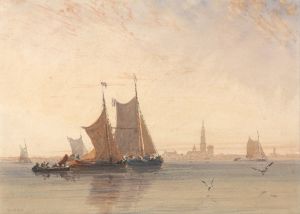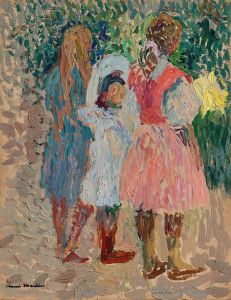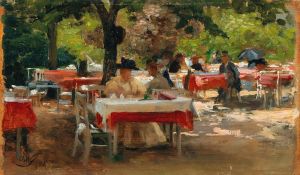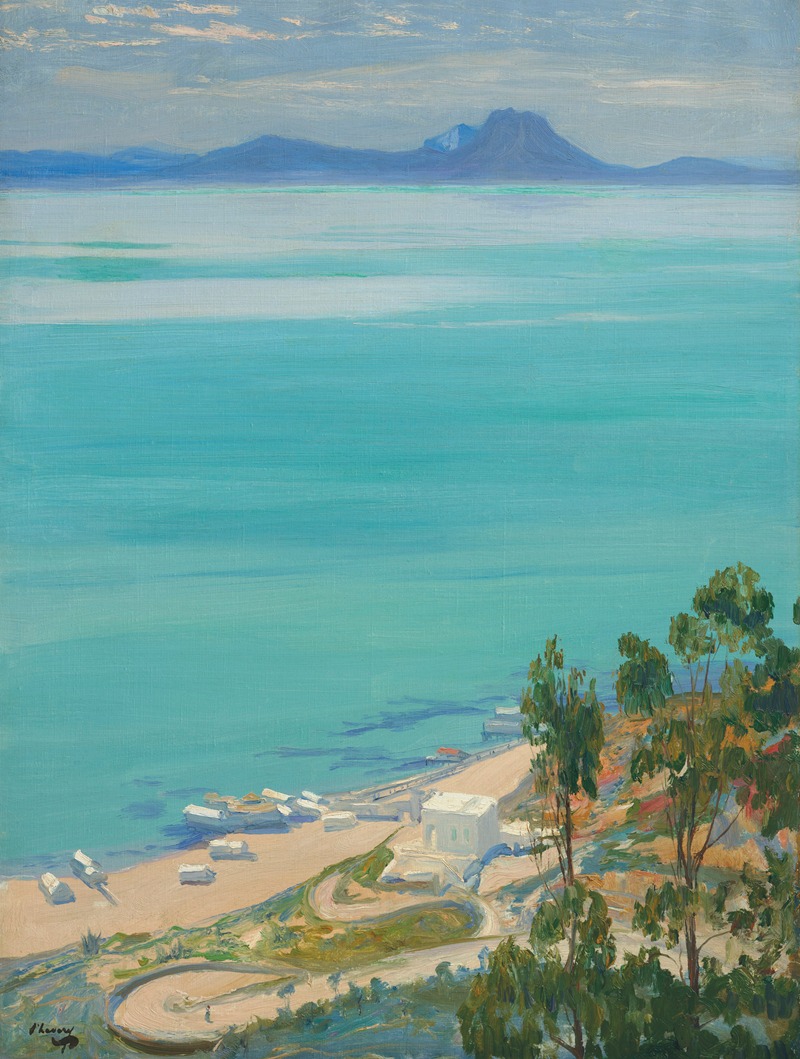
The Bay of Tunis, Morning
A hand-painted replica of Sir John Lavery’s masterpiece The Bay of Tunis, Morning, meticulously crafted by professional artists to capture the true essence of the original. Each piece is created with museum-quality canvas and rare mineral pigments, carefully painted by experienced artists with delicate brushstrokes and rich, layered colors to perfectly recreate the texture of the original artwork. Unlike machine-printed reproductions, this hand-painted version brings the painting to life, infused with the artist’s emotions and skill in every stroke. Whether for personal collection or home decoration, it instantly elevates the artistic atmosphere of any space.
Sir John Lavery's The Bay of Tunis, Morning is a painting created by the renowned Irish artist Sir John Lavery (1856–1941). Lavery was a prominent figure in the late 19th and early 20th centuries, known for his portraiture, landscapes, and depictions of society life. His works often reflect his travels and his keen interest in capturing light and atmosphere.
This particular painting, The Bay of Tunis, Morning, showcases Lavery's ability to depict serene and luminous landscapes. The artwork portrays the Bay of Tunis, located in Tunisia, North Africa. The bay is a natural harbor that has historically been significant due to its proximity to the ancient city of Carthage and the modern capital city of Tunis. Lavery’s depiction captures the tranquil beauty of the bay during the morning hours, with soft light illuminating the scene. The painting is characterized by Lavery's impressionistic style, with loose brushstrokes and a focus on the interplay of light and color.
Lavery was known to travel extensively, and his visits to North Africa provided inspiration for several of his works. His time in the region allowed him to explore new landscapes and light conditions, which influenced his artistic approach. Paintings like The Bay of Tunis, Morning reflect his fascination with the Mediterranean and North African environments, which were markedly different from the landscapes of his native Ireland and adopted home of England.
The painting is part of Lavery's broader body of work that often highlights his interest in capturing the essence of a place through atmospheric effects. His ability to convey a sense of place and time is evident in this piece, where the morning light and calm waters evoke a peaceful and reflective mood.
As of now, specific details about the painting's creation date, its current location, or any exhibitions it has been part of are not widely documented. However, it remains an example of Lavery's skill in landscape painting and his ability to bring the viewer into the scene through his mastery of light and composition.
Lavery was knighted in 1918 for his contributions to art and is remembered as one of the leading artists of his time. His works continue to be celebrated for their technical excellence and their ability to capture the spirit of the places and people he painted.





